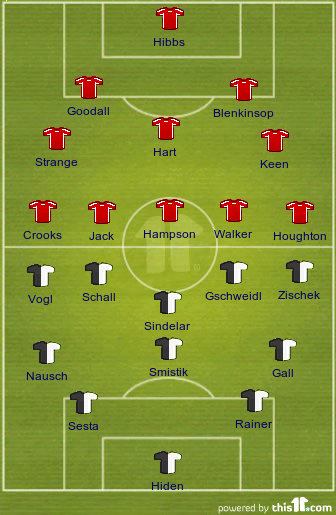The Danubian School
On the continent it took much longer for the significance of the changes to the off-side rule to be understood. While in England most clubs followed Chapman’s lead within a few years of his innovations, the majority of Europe remained married to the traditional pyramid formation. Ironically it was two of the continent’s greatest anglophiles who most resisted any move to the “third back” system.
Hugo Meisl of Austria
Football enjoyed a popularity in Austria in the 1920s which matched that of any nation outside the British Isles and under the guidance of Meisl they constructed a fantastic attacking team. Although they retained a broad allegiance to the classic 2-3-5 formation, their use of centre-forward Matthias Sindelaar in a slightly withdrawn position was extremely effective. Having destroyed Scotland 5-0 in Vienna (admittedly the Scots fielded a weakened team and were badly affected by injuries) they embarked on a string of results which shocked the rest of Europe . Such was the movement of the team (and in particular Sindelaar) that their system became known as the “Danubian whirl”. Indeed the progress of the game in Austria , Czechoslovakia and Hungary
At the heart of the rise of the Danubian school was the influence of English coach Jimmy Hogan. Having left England he coached in Switzerland , Hungary , Holland , Germany and Austria England
 |
| Austria (below) v. England, 1932 |
The success of this system was evident at the 1934 World Cup where Italy Italy
The one place in Europe which was torn between the movement of the Wunderteam and the effectiveness of the WM was Germany
Given their success domestically one might have expected the German national coach Otto Nerz to have modelled his own team on Schalke’s successful style. Instead he was a great advocate of the WM. Nerz saw the Spinning Top as a pretty style, that ultimately went nowhere. Chapman had shown in England Germany , as they reached the semi-finals where they lost to Czechoslovakia

No comments:
Post a Comment